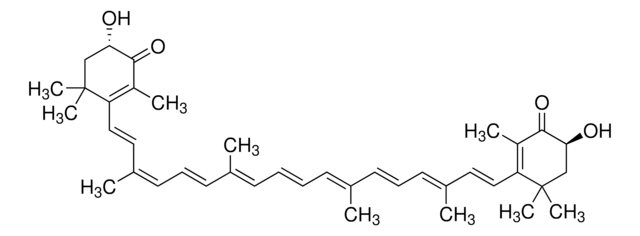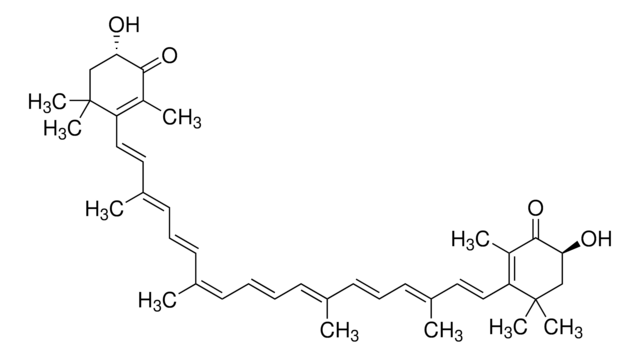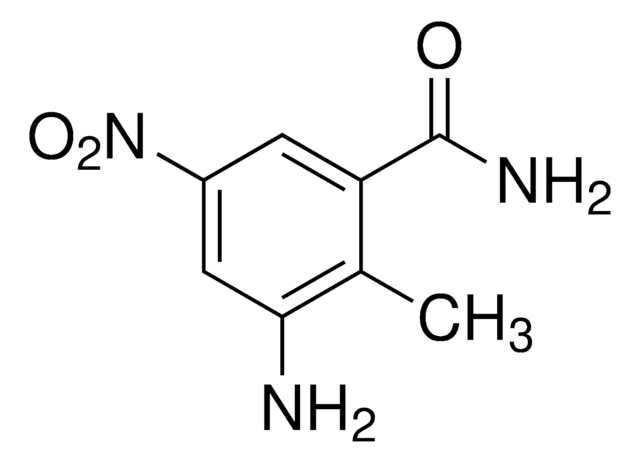SML0982
Astaxanthin
from Blakeslea trispora, ≥97% (HPLC), powder, PPARγ
Synonyme(s) :
3,3′-Dihydroxy-β-carotene-4,4′-dione, trans-Astaxanthin
About This Item
Produits recommandés
Nom du produit
Astaxanthin, ≥97% (HPLC), from Blakeslea trispora
Source biologique
Blakeslea trispora
Niveau de qualité
Essai
≥97% (HPLC)
Forme
powder
Conditions de stockage
desiccated
protect from light
Couleur
, pink to very dark purple
Solubilité
DMSO: 1 mg/mL (warmed)
Température de stockage
−20°C
InChI
1S/C40H52O4/c1-27(17-13-19-29(3)21-23-33-31(5)37(43)35(41)25-39(33,7)8)15-11-12-16-28(2)18-14-20-30(4)22-24-34-32(6)38(44)36(42)26-40(34,9)10/h11-24,35-36,41-42H,25-26H2,1-10H3/b12-11+,17-13+,18-14+,23-21+,24-22+,27-15+,28-16+,29-19+,30-20+/t35-,36-/m0/s1
Clé InChI
MQZIGYBFDRPAKN-UWFIBFSHSA-N
Description générale
Application
- as an antioxidant to study its effect on Brachionus manjavacas (Rotifera) population growth
- to study its effects on the treatment of diabetic retinopathy.
- to investigate its role in restoring the expression of Nrf2 (nuclear factor erythroid 2 p45-related factor 2) and glutathione S-transferase P1 (GSTP1) through epigenetic modification in human prostate LNCaP cells.
Actions biochimiques/physiologiques
Autres remarques
Code de la classe de stockage
11 - Combustible Solids
Classe de danger pour l'eau (WGK)
WGK 3
Point d'éclair (°F)
Not applicable
Point d'éclair (°C)
Not applicable
Faites votre choix parmi les versions les plus récentes :
Déjà en possession de ce produit ?
Retrouvez la documentation relative aux produits que vous avez récemment achetés dans la Bibliothèque de documents.
Les clients ont également consulté
Protocoles
HPLC Analysis of Carotene Compounds on Ascentis® RP-Amide
Contenu apparenté
Separation of Astaxanthin; Xanthophyll
Notre équipe de scientifiques dispose d'une expérience dans tous les secteurs de la recherche, notamment en sciences de la vie, science des matériaux, synthèse chimique, chromatographie, analyse et dans de nombreux autres domaines..
Contacter notre Service technique







![1,8-Diazabicyclo[5.4.0]undéc-7-ène 98%](/deepweb/assets/sigmaaldrich/product/structures/120/564/5b373e23-1624-489c-8efb-692de0f96ffb/640/5b373e23-1624-489c-8efb-692de0f96ffb.png)



